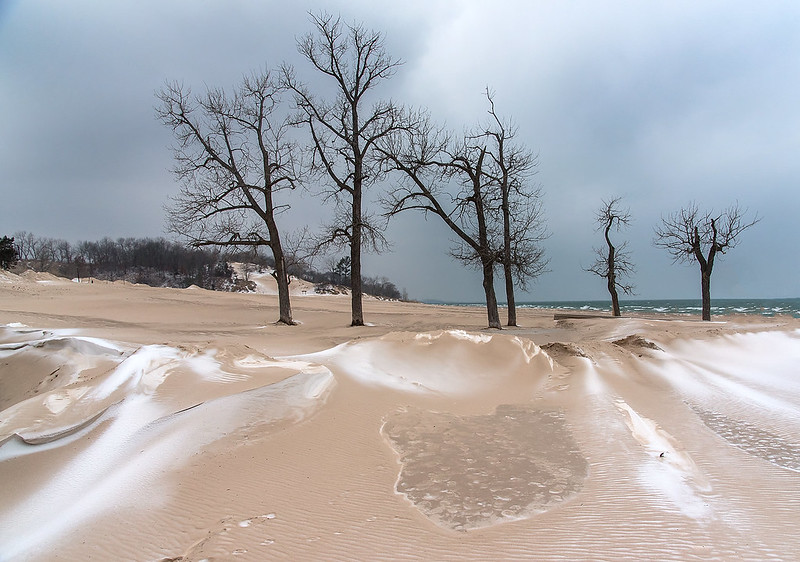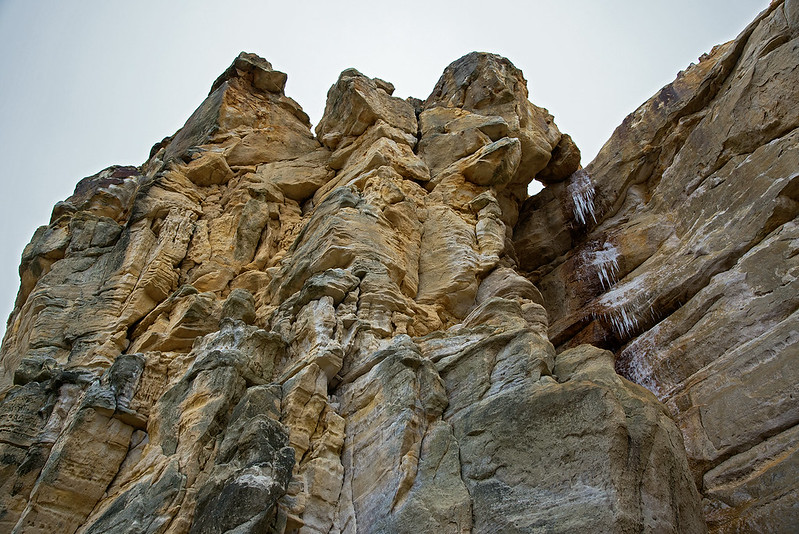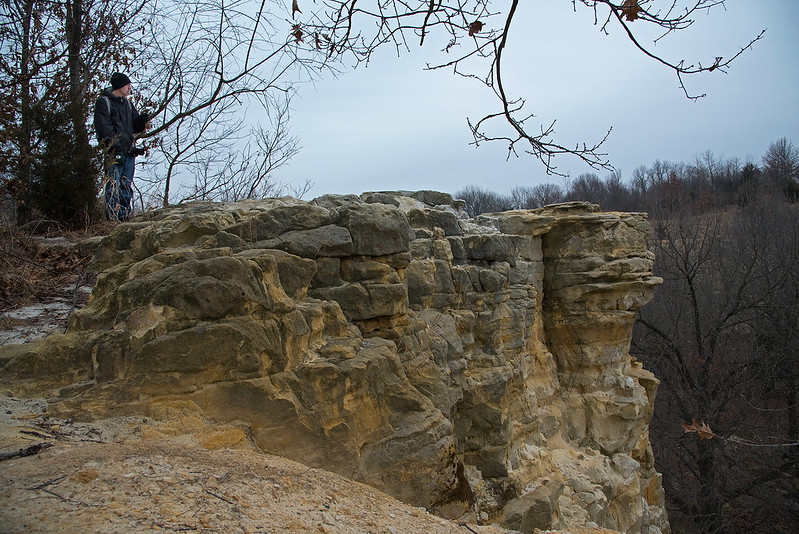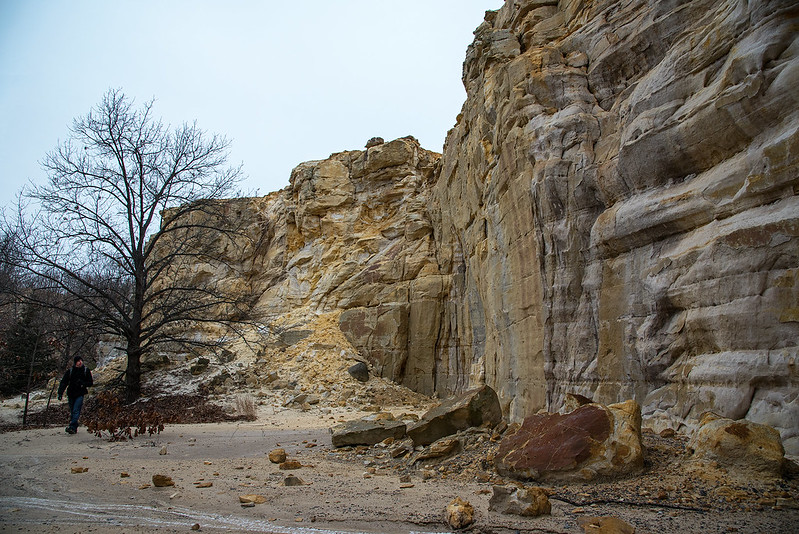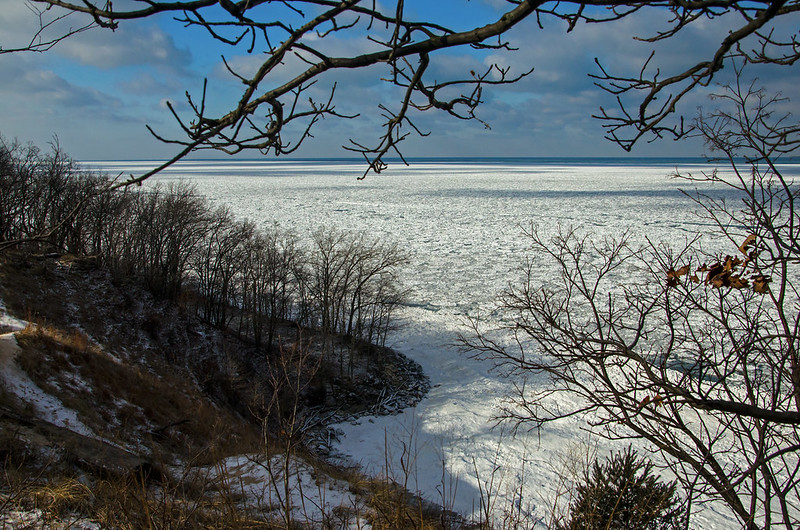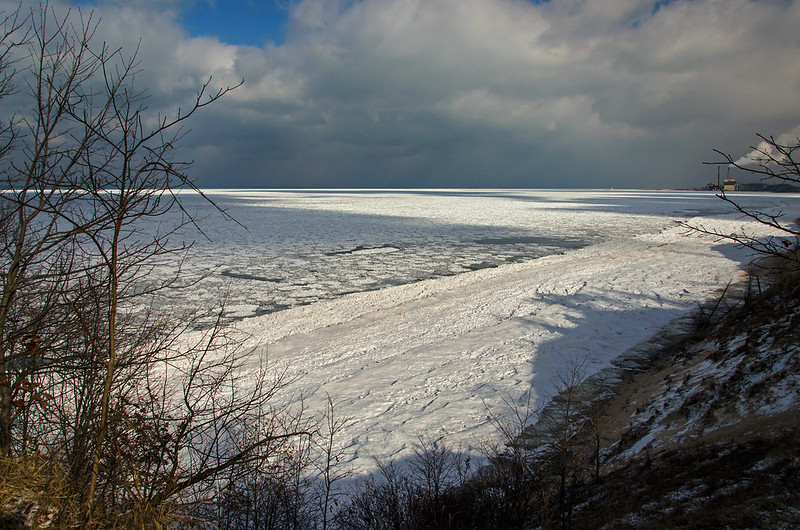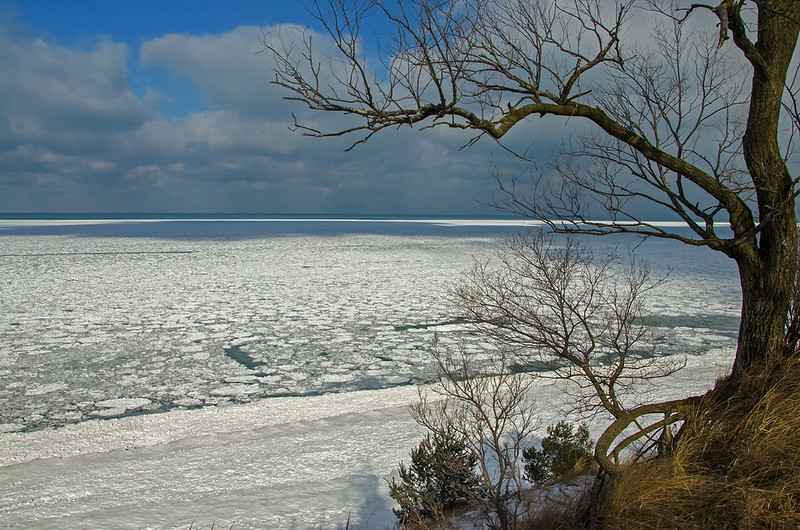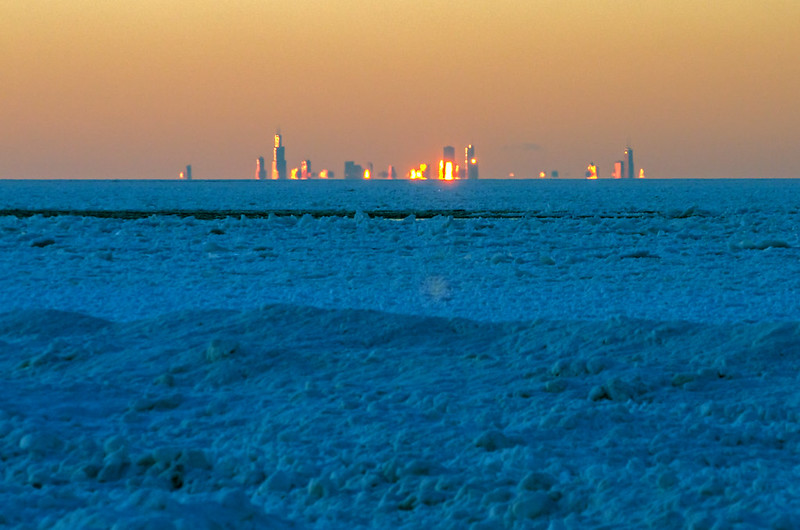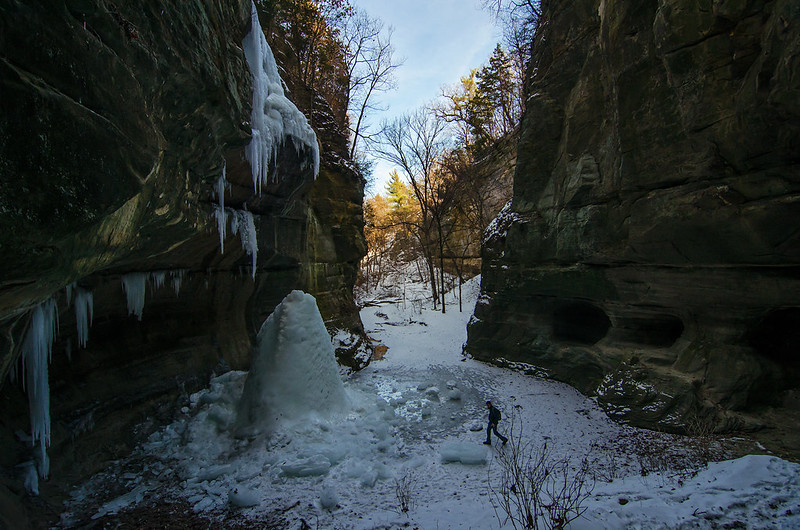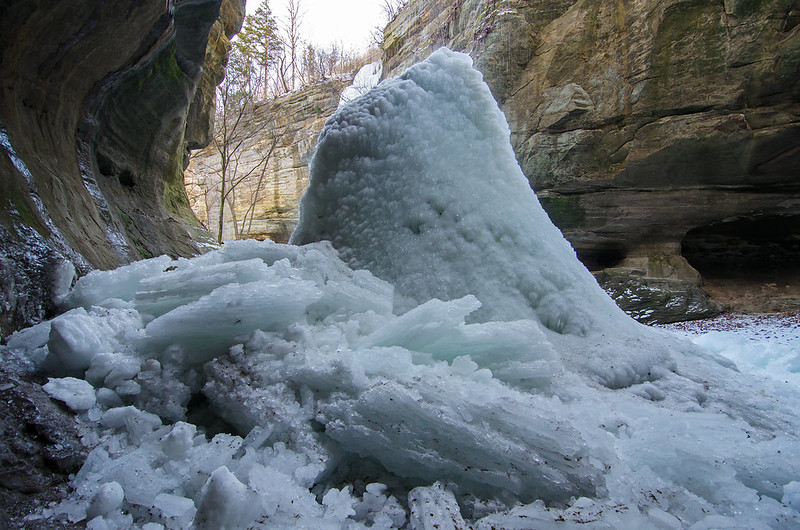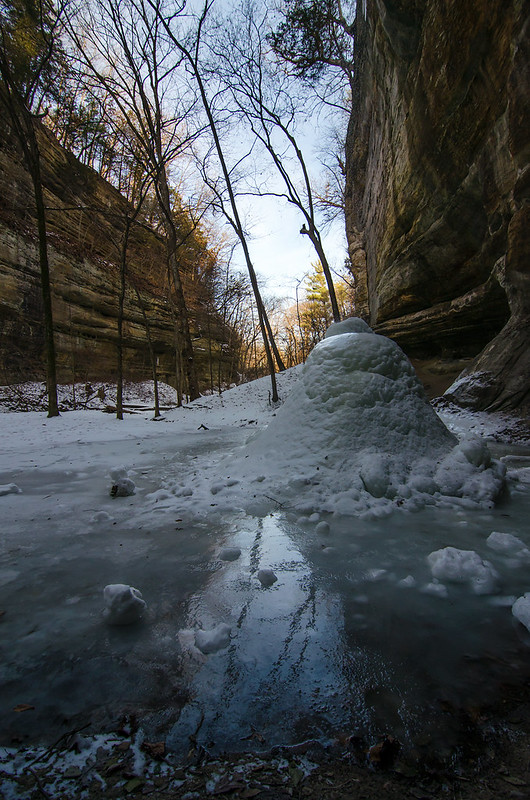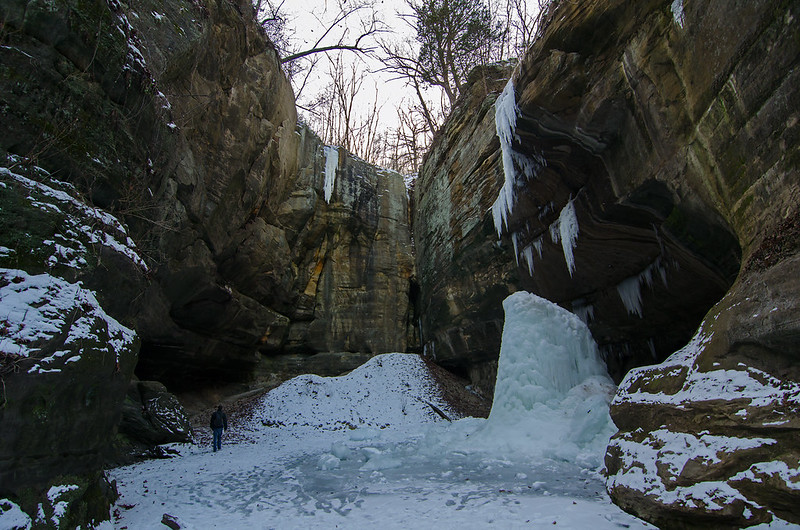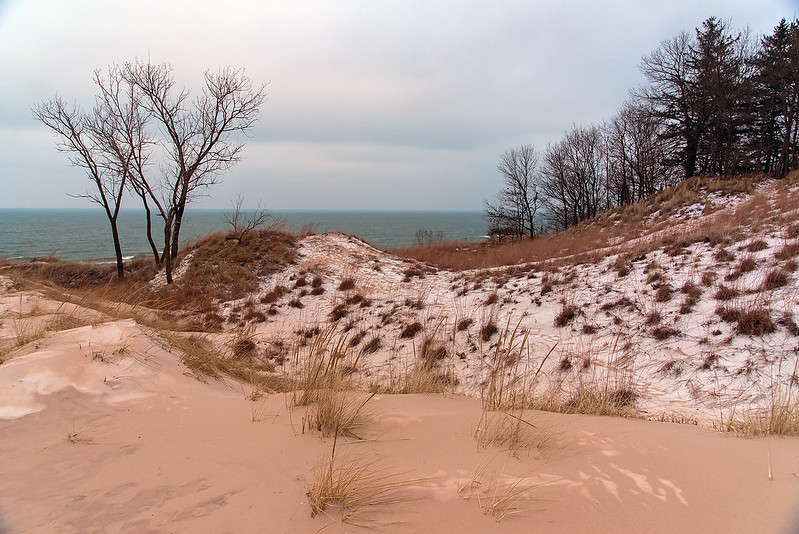
The beginning of our hike through the wooded dunes of the Indiana Dunes State Park on a cold, January morning. We arrived before sunrise, around 6:45 am, and found ourselves on one of the longest trails of the park.
Snow showers moved in and out all morning, never amounting to much more than a dusting on top of the 1/2 inch of snow on the ground. As we hiked we decided to take additional trails up through the dunes, and realized we were on the "Three Dune Challenge," a hike up and down the three tallest dunes in the park. We found it funny because hiking over only three dunes isn't really a challenge for us, as we probably hike over 5 or 6 during our 12 mile hikes on a regular basis.
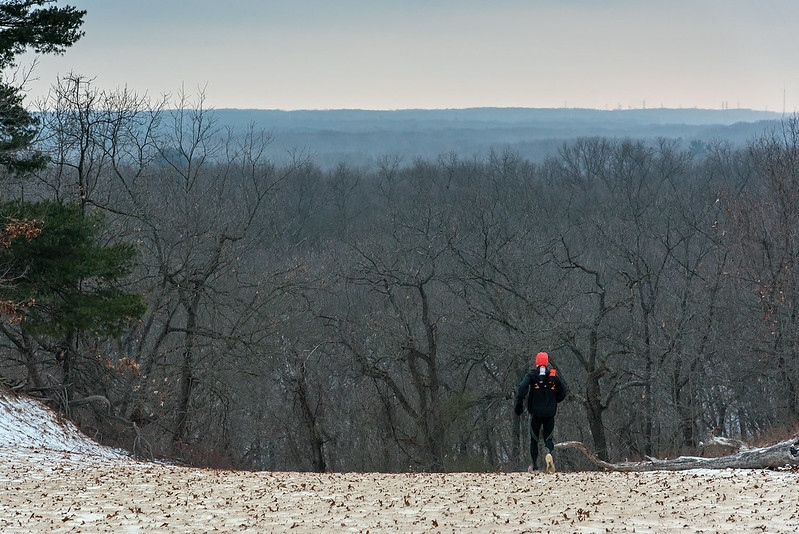
This park had quite a few joggers running the long, flat trails, and a few running up the steep dunes. I often thought these trails would be the greatest for cross country training, and I suspect the group of young men running yesterday thought the same.
